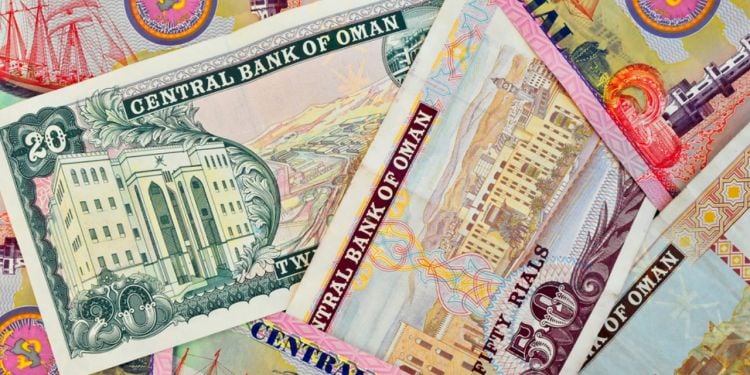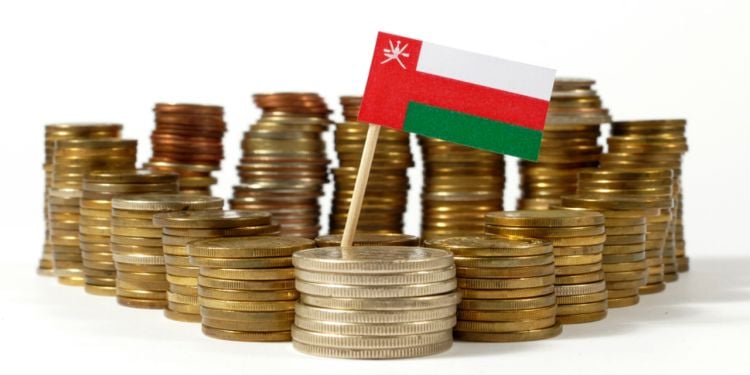Living in Oman: the ultimate expat guide
Everything you need to know for a successful life in Oman.
Oman, a sultanate on the Arabian Peninsula, is increasingly attracting expatriates in search of a pleasant lifestyle, balancing tradition and modernity. Bordered by the Arabian Sea and the Gulf of Oman, it’s renowned for its warm hospitality and well-managed development. The capital, Muscat, strikes a harmonious balance between modern infrastructure and respect for traditions. With a population exceeding 5 million, of which around 40% are expatriates, the country appeals to both skilled professionals and families. The French community, though still modest, benefits from international schools, active associations, and a well-integrated support network.
5 great reasons to choose Oman
- Sunny climate: discover beautiful sandy beaches, stunning mountains, and deserts all year round.
- Attractive taxation: there’s no personal income tax and a simplified tax system.
- Job opportunities: positions available, especially in oil, gas, logistics, tourism, and growing services sectors.
- Rich and authentic culture: known for its hospitality, preserved heritage, and a great sense of tolerance.
- Safe living environment: with low crime rates and a serene atmosphere, quality of life is enhanced.
The Expat.com guide has been designed to assist you in preparing for your move to Oman under the best conditions. Here, you will find all the essential information: visa, employment, housing, health, daily life and local integration.
Official language: Arabic, but English is widely spoken | Local currency: Omani Rial (OMR) | Time difference from France: +2 hours in winter, +3 hours in summer | Flight duration Paris - Muscat: approximately 7 hours |
Formalities and visas in Oman
To enter Oman, French and European nationals are required to have a passport that is valid for at least six months after arrival. A visa is necessary, except for very short stays (transit or occasional exemptions). For tourist stays, you can apply for an eVisa, which is valid for 30 days and can be renewed once. For those looking to settle permanently in Oman, it is essential to apply for an appropriate visa tailored to your situation (work, study, etc.). This process is generally done through a local sponsor—such as an employer or university. Once in Oman, expatriates must obtain a Resident Card within 30 days: this card is vital for renting accommodation, opening a bank account, and accessing public services.
💡 Useful tips
- Check the current requirements on the Royal Oman Police website.
- Allow several weeks for your visa application process.
- Certain documents (like diplomas, marriage certificates, birth certificates, etc.) must be translated into English or Arabic and legalized.
- In the event of a change of employer, a new visa must be applied for.
📍 To learn more

General visa requirements for Oman
If you are moving to Oman, it is important to be aware of the country's visa options and entry ...

Obtaining Driving License in Oman : Tips and Suggestions
This article offers a comprehensive guide for obtaining a driving license in Oman – which ...
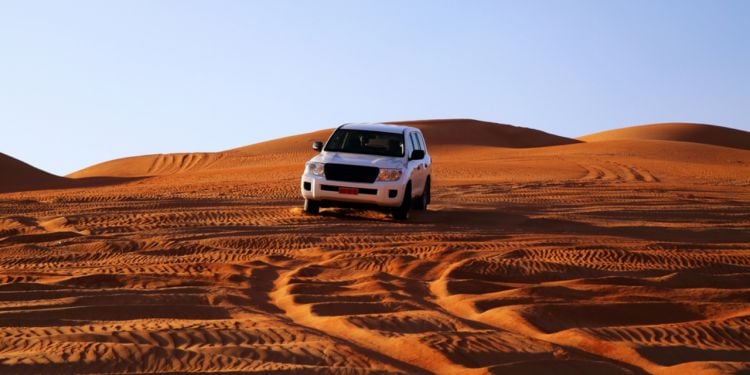
Driving in Oman
Expatriates tend to prefer to drive in Oman, as public transportation isn't fully implemented ...
Working in Oman
Oman has an economy that is still largely dominated by oil and gas, but is progressively diversifying into logistics, tourism, construction, and technology. The job market remains competitive, and English is the most commonly used working language. While regulated by law, the working conditions for expatriates often involve longer hours, especially in the private sector.
Expatriates can also pursue business opportunities in Oman: since the foreign investment law was introduced in 2019, it's often possible to own 100% of a company without a local partner, although some activities are still reserved for Omanis. The free zones (such as Sohar, Salalah, or Duqm) offer additional tax and duty advantages, along with simplified procedures.
In-demand professions
- Engineers and technicians in the energy and construction sectors
- Logistics and maritime transport specialists
- Qualified doctors, nurses, and teachers
- Tourism and hospitality professionals
- Information technology experts
💡 Key takeaways
- Experience and proficiency in English are often essential for securing a job.
- The taxation system is favorable: there is no personal income tax.
- Starting a business is attractive in the free zones, which offer more flexibility for foreigners.
Unemployment rate: approximately 3% | Legal working hours: 40 hours per week | Minimum wage: 325 OMR/month (approximately 790 €) | Income tax: No income tax - 5% starting in 2028 on higher incomes | Corporate tax: 3% to 15%, VAT set at 5% |
📍 Further resources
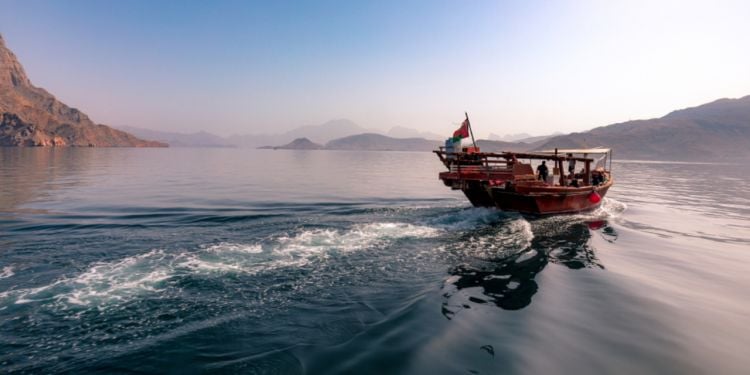
Finding a job in Oman
While it's not recommended for anyone to go to Oman to look for a job, it's important to ...

Work conditions in Oman
Working in Oman offers a unique combination of professional opportunities and cultural experiences. ...

Setting up a business in Oman
A major change came a few years ago when it was officially decided that expatriates do not need an ...
Studying in Oman
Oman currently attracts few foreign students compared to its Gulf neighbors, but its higher education offerings are expanding. The country features several recognized institutions, including Sultan Qaboos University (SQU) in Muscat, the main public university, alongside private institutions such as Muscat University, the German University of Technology (GUtech), and Dhofar University in Salalah. These institutions offer a range of programs in engineering, science, business, and health.
Why study in Oman?
Omani universities provide education in both Arabic and English, with programs increasingly designed for an international audience. Studying in Oman allows students to experience a multicultural and safe environment, complemented by modern infrastructure. The cost of education is generally more affordable than in other Gulf countries, ranging from 3,000 to 10,000 USD per year (approximately €2,800 to €9,300), depending on the chosen program. The primary drawback is the limited number of internationally ranked universities, which can affect the recognition of certain degrees.
💡 Our tips
- Check the language of instruction before enrolling: many courses are offered in English.
- Plan for your student visa, which you'll need to apply for through the Royal Oman Police and your host university.
- Budget for housing: spots in university residences are limited, and shared accommodation is a common option.
- Research the recognition of your degrees in France if you plan to return after your studies.
Retiring in Oman
Oman may not be the typical retirement destination for many expatriates, but some choose to stay after their careers here. The country offers a captivating mix of safety, a sunny climate, and an authentic lifestyle surrounded by beaches, mountains, and desert. However, there is no specific "retirement visa", which means you’ll need to explore alternatives, such as a residence visa linked to property investment, family reunification, or a sponsored residency permit.
3 major advantages
- Attractive taxation: no income tax, and foreign pensions are not taxed locally.
- Modern healthcare system with easy access to private hospitals in Muscat and other major cities.
- High quality of life in a safe and welcoming environment marked by Omani hospitality.
💡 Important to know
- The legal retirement age is set at 60 years, but expatriates are not subject to this rule and can continue to work beyond that age.
- To remain in the country after retirement from work, you will need to apply for a residence permit through a sponsor or investment.
- The cost of living remains moderate compared to other Gulf countries: for a comfortable lifestyle in Muscat, you should expect a net income of at least 1,200 to 2,000 OMR per month (approximately 2,900 to 4,800 €), depending on your housing and lifestyle.
Finance and banking in Oman
Managing your finances effectively is crucial when relocating to Oman. The country boasts a modern banking system regulated by the Central Bank of Oman. Expatriates typically need to provide a visa, a passport, and proof of residence (such as a lease or bill) to open a local bank account. Some banks may also request a letter from your employer or additional financial documentation. The tax system is appealing: there is no personal income tax, although a 5% levy on high earners is set to be introduced in 2028. A 5% VAT applies to most goods and services.
💡 Our tips
- Open a local bank account as soon as you settle in: it is essential for paying rent and utility bills.
- Check the tax treaty between your home country and Oman. The one signed with France helps avoid double taxation.
- Budget for a significant housing expense, which can represent 30% to 40% of monthly costs for an expatriate living in Muscat.
📈 Further reading
Health care in Oman
Oman's health system combines a public sector (managed by the Ministry of Health) with a rapidly developing private sector. For Omani citizens, public healthcare is largely subsidized and often free in many cases. Expatriates can access public healthcare in certain situations (especially emergencies or if employed in the public sector), but typically rely on private facilities, where fees must be settled on the spot. In the capital, Muscat, and in larger cities, private hospitals are equipped with modern facilities and internationally trained doctors.
To give you an idea of costs: a private consultation lasting 15 minutes in an office in Muscat costs around 15 OMR (approximately 35-40 euros). Routine maternity expenses at a private clinic range from 500 to 700 OMR (about 1,110 to 1,555 euros), depending on the hospital; for example, a cesarean delivery typically costs 950 to 1,100 OMR (roughly 2,110 to 2,440 euros).
💡 Important points
- For non-urgent cases, expatriates are often directed to the private sector; costs are generally required to be paid immediately.
- The government has recently adopted a resolution to expand certain exemptions from medical treatment costs, which include, under certain conditions, foreign residents.
- Medical costs (ambulance, admissions, hospitalization) may apply to expatriates even within the public sector.
- It is strongly recommended to take out a private health insurance plan, whether international or local, that covers hospital care, specialized services, maternity, and more.
📍 To learn more

The health system in Oman
Most of the time, when securing a job in Oman, your employer will provide you with health insurance, but it is optional, even if the government is ...
Education and Schools in Oman
In Oman, school is mandatory from the age of 6 and is primarily taught in Arabic. However, expats often prefer private and international schools, which offer instruction in English, French, or various other curricula.
Types of schools:
- Local public schools: Free for citizens, they sometimes enroll expatriate children but are rarely attended by them. The medium of instruction is predominantly Arabic, which limits their appeal for foreign families.
- Local private schools: Several schools offer bilingual programs or are based on international curricula. For instance, the Sultan’s School combines teaching in Arabic and English and prepares students for IGCSE and IB diplomas. Other schools, such as the Oman Private School, blend the local curriculum with subjects taught in English. These institutions provide an interesting alternative for families seeking a partial immersion in the local education system.
- French school: The Lycée Français International de Mascate (LFIM), part of the AEFE network, welcomes students from pre-school to high school. It follows the French curriculum with a focus on English. Tuition fees range from 3,126 OMR to 5,416 OMR per year (approximately 7,600 to 13,200 €).
- International schools: Widely available in Muscat, these schools offer British, American, or IB programs. Among the most reputable are the British School Muscat (BSM), ABA Oman International School, and the American International School of Muscat (TAISM). Tuition fees typically range from 3,500 OMR to 10,300 OMR per year (approximately 8,600 to 25,000 €), depending on the grade and institution.
💡 Practical tips
- Plan: Spaces in international schools and at LFIM are limited.
- Check the application deadlines (often several months before the school year starts).
- Some schools require admission tests or a good level of English.
- Prepare a budget for additional costs, including uniforms, school transport, and extracurricular activities.
📍 To learn more
Accommodation in Oman
Renting is the most common option for expatriates in Muscat. A two-bedroom apartment typically rents for around 300 to 600 OMR/month (approximately 665 to 1,330 EUR) in desirable neighborhoods such as Al Khuwair or Azaiba, while a family villa in Al Mouj or Shatti Al Qurum usually costs between 800 and 1,500 OMR/month (1,775 to 3,330 EUR). Lease agreements are generally for one year with one month deposit required as security, and utilities are not always included.
Property purchase is only permitted for foreigners in certain designated areas such as Al Mouj Muscat, Muscat Bay, or Jebel Sifah. A two-bedroom apartment can be purchased for an average of 70,000 to 160,000 OMR (around 156,000 to 355,000 EUR), depending on the location, while a family villa in Al Mouj typically negotiates for about 200,000 OMR (approximately 444,000 EUR).
🔍 Going further
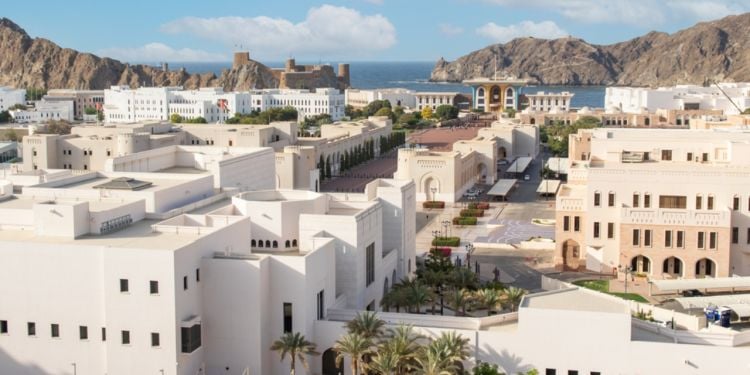
Accommodation in Oman
Oman offers a variety of housing options that cater to different needs, budgets, and lifestyles. Whether you're single or an expatriate family, ...
Moving to Oman
Preparing for a move to Oman requires careful planning. With shipping, customs formalities, and requirements for pets, it’s best to plan for each step. Here are the key points to consider before your departure:
- Compare quotes and services from international moving companies (including insurance and packing options). Most goods arrive by sea through the port of Sohar, although air shipping is an option. By boat, delivery can take up to 6 weeks, depending on stops and customs procedures. The hot and humid climate necessitates proper packaging to prevent mold.
- Prepare for customs procedures: a detailed inventory is mandatory. Used personal belongings are generally exempt from taxes, but a standard customs duty of 5% applies to new goods or certain items (e.g., electronics, alcohol, tobacco). For a shipment valued at 20,000 OMR (approximately €44,400), you should expect to pay about 1,000 OMR (around €2,220) in customs fees.
- Many accommodations in Muscat are already partially furnished, so some expatriates choose to limit their shipments to reduce transport costs.
- Gather your essential documents (birth certificate, marriage certificate, employment contract, driving license, visa, or residency permit). Depending on the situation, a certified translation in English or Arabic may be required.
- If you are travelling with a pet, it's vital to comply with the import conditions (ISO microchip, rabies vaccination, veterinary certificate, serological test). Pets under 4 months old and certain banned breeds of dogs (Pitbull, Mastiff, Staffordshire Terrier, Rottweiler, etc.) are not allowed in Oman.
📍 To learn more
Leisure in Oman
Oman offers a unique mix of stunning nature and rich culture, providing a variety of leisure options tailored for expatriates and families. From museums to hiking, water sports to traditional festivals, there’s a diverse range of activities available, often less crowded than in major Gulf cities.
Leisure activities include: hiking in wadi and mountain areas (Jebel Akhdar, Jebel Shams), diving and snorkeling (in the waters around Masirah Island or Musandam), desert excursions (camping, 4x4 tours, dunes), water sports (sailing, paddleboarding, kayaking), fishing, turtle watching at Ras Al Jinz, exploring souks (such as Muttrah Souq in Muscat), and visiting ancient forts like the fort of Nizwa and Bahla Fort. Families enjoy animal parks, water centers in Muscat, and local zoos or smaller themed parks.
Must-see attractions
- The wadi Shab and wadi Bani Khalid, perfect for immersive water hikes.
- The ascent of Jebel Shams, known as the "Grand Canyon of Oman," offers breathtaking views.
- The 1000 Forts Road in Oman, a route rich in cultural and architectural heritage.
- The beaches of Masirah Island for snorkeling or turtle watching.
🔍 Further exploration
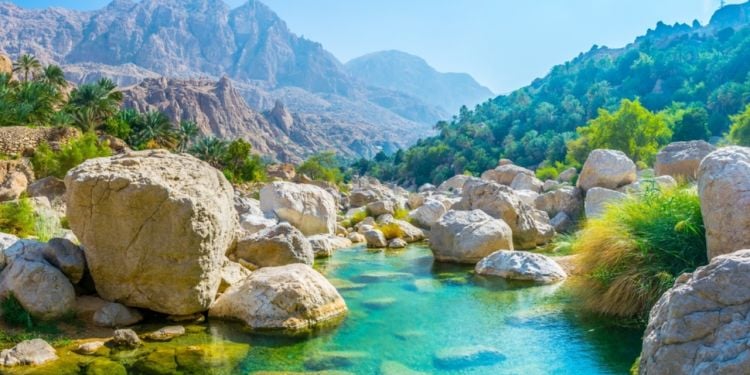
Leisure activities in Oman
Oman offers a wide range of leisure and entertainment events for expatriates, thanks to the unique beauty of nature, rich cultural heritage, and ...
Everyday life in Oman
Living in Oman means adapting to a lifestyle shaped by the climate and traditions, while enjoying modern infrastructures and a safe and welcoming environment.
Things to note:
- Security is excellent, with a very low crime rate and peaceful residential neighborhoods.
- The workweek runs from Sunday to Thursday. During Ramadan, working hours are shortened and social activities adjust accordingly.
- Schools start early (around 7:30/8:00 AM) and finish in the early afternoon, leaving time for extracurricular activities.
- Public transport options are limited; most expatriates prefer personal cars or taxis (like Otaxi).
- Telecommunications and internet: mobile coverage is excellent, with 99% of the territory covered by 4G and widespread 5G in urban areas. High-speed internet is available, with fibre optic services as well. Mobile plans start at around 5 OMR/month (~11 euros), and a home internet subscription costs an average of 25 OMR/month (~55 euros). The connection is stable in urban areas for streaming and remote work, though it may be less reliable in isolated or mountainous regions.
- The climate significantly influences daily life: between May and September, temperatures often exceed 40°C, prompting a preference for indoor activities.
📍 To explore further
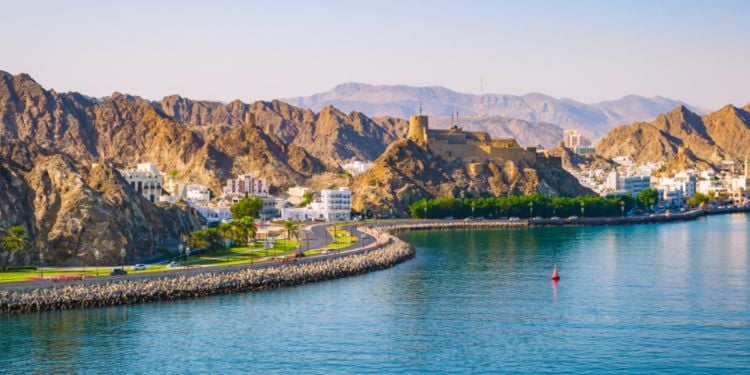
Traveling around Oman
If you are relocating to Oman, it is important to understand how transportation works in the country. Generally, Oman is still very car-centric, with ...

Phone, Internet, and mail in Oman
Phone and Internet services are easily available through different providers. Landline services are mainly used by companies, while most individuals ...
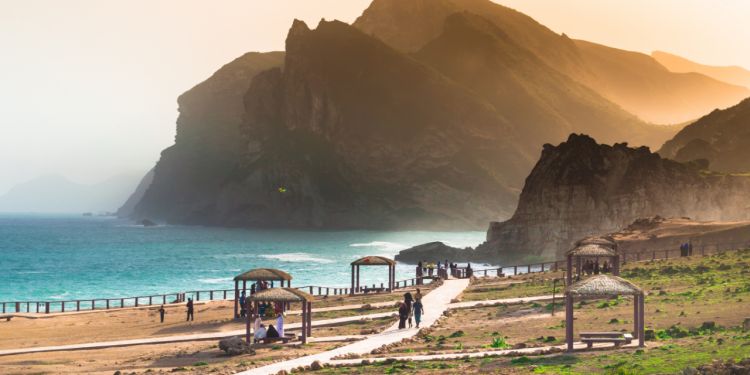
The Omani lifestyle
Before moving to Oman, people should be aware of the local lifestyle. The Omani way of life is a ...
Cost of living in Oman
The cost of living in Oman is lower than in France, but it primarily depends on your housing choices and, for families, on schooling. Depending on your lifestyle and the type of accommodation selected, monthly expenses can vary significantly. In Muscat, expect to pay around 500 to 900 OMR/month (€1,110 to €2,000) for an individual, and 1,800 to 3,200 OMR/month (€4,000 to €7,100) for a family of four, excluding schooling costs. Tuition at international private schools can add 350 to 860 OMR/month per child (€780 to €1,910).
Here are estimated monthly benchmarks to give you a clearer picture of living costs in Oman:
For an individual | For a family of 4 | |
Groceries | 90 to 160 OMR (approximately 200 to 355 €) | 350 to 600 OMR (approximately 780 to 1,330 €) |
Utilities (water, electricity, internet, phone...) | 30 to 60 OMR (approximately 67 to 133 €) | 80 to 150 OMR (approximately 178 to 333 €) |
Healthcare (excluding insurance) | 10 to 30 OMR (approximately 22 to 67 €) | 50 to 120 OMR (approximately 111 to 267 €) |
Leisure & outings | 40 to 120 OMR (approximately 89 to 265 €) | 150 to 300 OMR (approximately 333 to 666 €) |
Education (if you have children) | / | 300 to 860 OMR/child (approximately 667 to 1,910 €) |
Rent | 300 to 600 OMR/month (approximately 665 to 1,330 €) for a two-bedroom apartment | 800 to 1,500 OMR (approximately 1,775 to 3,330 €) for a three-bedroom apartment or villa |
Transportation | 50 to 120 OMR (approximately 111 to 267 €) | 120 to 250 OMR (approximately 266 to 555 €) |
Subscriptions (gym, clubs, streaming services...) | 10 to 30 OMR (approximately 22 to 67 €) | 30 to 80 OMR (approximately 67 to 178 €) |
Imported goods (organic, cheese, wine) | 9 to 32 OMR (approximately 20 to 70 €) | 35 to 120 OMR (approximately 78 to 265 €) |
Domestic help (common for families in Oman) | / | 120 to 200 OMR (approximately 266 to 444 €) |
Income tax | 0% - no income tax | 0% - no income tax |
The essentials to remember
Plan for your administrative tasks: visa, driving license, health insurance...
Take the time to check our practical articles, especially regarding housing, employment, taxation, and education in Oman.
Feel free to ask your questions on the Oman forum, where the expat community shares practical advice and experiences.
To integrate smoothly, be open to local traditions and enjoy the Omani way of life, which is peaceful, family-oriented, and closely connected to the sea and desert.
Moving to Oman means discovering a welcoming country filled with contrasts and opportunities, both professionally and personally. To ensure your project is successful, careful preparation is crucial. We hope this Expat.com guide has provided you with the keys to organize your move and fully enjoy your new life in Oman.
We do our best to provide accurate and up to date information. However, if you have noticed any inaccuracies in this content, please contact us.
News & testimonies

Oman extends residency to 10 years and introduces new workforce regulations
By easing residency renewals, Oman aims to attract more skilled professionals and investors. The change is a key step in advancing Oman Vision 2040 and its push for a more diversified economy.

Here's why Oman removed its age limit for expat workers
The Omani private sector is rubbing its hands. For the past year, expatriates over the age of 60 have been able to continue working in Oman, thanks to a circular from the country's Ministry of Labor, which lifted the age limit for expatriate workers. It's believed that senior professionals have not only the knowledge and technical skills but also the experience, patience and resilience that are essential for the smooth running of a business. But is this measure open to all? Under which conditions can one work after 60 years of age?

Oman: The visa ban further extended for these professions
The expat visa ban was first announced in January 2018 with the aim to reduce local unemployment. Since then, it has been renewed once and extended to several other professions. It is being renewed for another six months.

Allan in Oman: "Oman is probably the best place in the GCC"
Native Filipino, Allan is now living in Oman, in the south of Arabian Peninsula. This dancer, writer but especially traveler gives us his testimony about living in a country culturally completely different than Philippines and how he succeeds to adapt himself.

